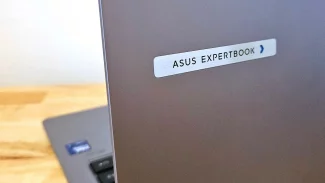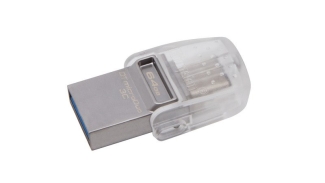fdmountd.1.gz
fdmount
Name
fdmount - Floppy disk mount utility
Note
This manpage has been automatically generated from fdutils's texinfo
documentation. However, this process is only approximative, and some
items, such as crossreferences, footnotes and indices are lost in this
translation process. Indeed, these items have no appropriate
representation in the manpage format. Moreover, only the items specific
to each command have been translated, and the general information about
fdutils has been dropped in the manpage version. Thus I strongly advise
you to use the original texinfo doc.
*
To generate a printable copy from the texinfo doc, run the following
commands:
./configure; make dvi; dvips fdutils.dvi
*
To generate a html copy, run:
./configure; make htmlA premade html can be found at: CWhttp://www.tux.org/pub/knaff/fdutils
*
To generate an info copy (browsable using emacs' info mode), run:
./configure; make info
The texinfo doc looks most pretty when printed or as html. Indeed, in
the info version certain examples are difficult to read due to the
quoting conventions used in info.
Description
CWfdmount [CW-l] [CW--list] [CW-d] [CW--daemon] [CW--detach] [CW-i intervalCW] [CW--interval intervalCW] [CW-o mount-optionsCW] [CW-r] [CW-readonly] [CW-s] [CW--sync] [CW--nosync] [CW--nodev] [CW--nosuid] [CW--noexec] [CW-f] [CW--force] [CW-h] [CW--help] [drivenameCW] [mountpointCW] CWfdumount [CW-f] [CW--force] [drivenameCW] CWfdlist CWfdmountd [CW-i intervalCW] [CW--interval intervalCW] [CW-r] [CW-readonly] [CW-s] [CW--sync] [CW--nosync] [CW--nodev] [CW--nosuid] [CW--noexec] [CW--help] [drivenameCW] [mountpointCW]]
The CWfdmount program mounts a floppy disk in the specified
drive. It tries to figure out the exact format and filesystem type of
the disk from data in the disk's boot sector or super block and the
auto-detected track layout.
Currently, fdmount supports the filesystems CWminix, CWext,
CWext2, CWxia, and CWmsdos, and includes special support
for disks formatted by the CW2M utility for MS-DOS.
It also checks whether the disk is write protected, in which case
it is mounted read-only.
The symbolic drivename is (currently) one of CWfd[0-7],
corresponding to the special device files CW/dev/fd[0-7]. If
drivename is not specified, CWfd0 is assumed.
The disk is mounted on the directory mountpoint, if specified, or
on CW/fd[0-7]. In either case, the mount point must be an
existing, writable directory.
Due to a bug in the floppy driver (?), the polling interval (-i
flag) must be longer than the spindown offset. Thus you need to do (for
example) floppycontrol --spindown 99 before starting fdmountd in daemon
mode
Options
CW-l --listCW
List all known drives with their symbolic name, type, and mount
status.
CW-d --daemonCW
Run in daemon mode (see below).
CW--detach
Runs daemon in background, and detaches it from its tty. Messages
produced after the fork are logged to syslog.
CW-p fileCW
CW--pidfile fileCW
Dumps the process id of the daemon to
file. This makes killing the daemon easier:
CWkill -9 `cat fileCW`
CW-i intervalCW
CW--interval intervalCW
Set the polling interval for daemon mode. The unit for interval is
0.1 seconds, the default value is 10 (i.e. 1 second).
CW-o optionsCW
CW--options optionsCW
Sets filesystem-specific options. So far, these are only available for
DOS and Ext2 disks. The following DOS options are supported:
CWcheck, CWconv, CWdotsOK, CWdebug, CWfat,
CWquiet, CWblocksize. The following Ext2 options are
supported: CWcheck, CWerrors, CWgrpid, CWbsdgroups,
CWnogrpid, CWsysvgroups, CWbsddf, CWminixdf,
CWresgid, CWdebug, CWnocheck. When running as a daemon,
options not applying to the disk that is inserted (because of its
filesystem type) are not passed to mount.
CW-r --readonlyCW
Mount the disk read-only. This is automatically assumed if the
disk is write protected.
CW-s --syncCW
Mount with the CWSYNC option.
CW--nosync
Mounts without the CWSYNC option, even when running as daemon.
CW--nodev
Mount with the CWNODEV option. Ignored for CWmsdos
filesystems, otherwise always set for non-root users.
CW--nosuid
Mount with the CWNOSUID option. Ignored for CWmsdos
filesystems, otherwise always set for non-root users.
CW--noexec
Mount with the CWNOEXEC option.
CW-f --forceCW
Attempt a mount or unmount operation even CW/etc/mtab says that
the drive is already mounted, or not mounted, respectively.
This option is useful if CW/etc/mtab got out of sync with the
actual state for some reason.
CW-h --helpCW
Show short parameter description
Security
When mounting on the default mount point, the mount points' owner is set
to the current user, and the access flags according to the user's umask.
For a specified mountpoint, owner and permissions are left
unchanged. Default mount points are called CW/fd0, CW/fd1,
... , CW/fd7.
The user running fdmount must have read access to the floppy device for
read only mounts, and read/write access for read/write mounts.
Fdmount can be run suid root, allowing users to mount floppy
disks. The following restrictions are placed upon non-root
users:
*
If a mountpoint is specified explicitly, it must be owned by the user.
*
A user may only unmount a disk if the mount point is owned by the user,
or if it the disk has been mounted by the same user.
*
Non-msdos disks are automatically mounted with the CWnodev and
CWnosuid flags set.
However, do not rely on fdmount being secure at the moment.
Daemon mode
In daemon mode, the specified drive is periodically checked and if a
disk is inserted, it is automatically mounted.
When the disk is removed, it is automatically unmounted. However, it is
recommended to unmount the disk manually before removing it. In
order to limit corruption, disks are mounted with the SYNC option when
running in daemon mode, unless the CW--nosync flag is given.
Note that this mode has some potential drawbacks:
*
Some floppy drives have to move the drive head physically in order to
reset the disk change signal. It is strongly recommended not to use
daemon mode with these drives. See section floppycontrol, for details.
*
If a disk does not contain a filesystem (e.g. a tar archive),
the mount attempt may slow down initial access.
*
As fdmount cannot identify the user trying to use the disk drive,
there is no way to protect privacy. Disks are always mounted with
public access permissions set.
Diagnostics
CWerror opening device nameCW
CWerror reading boot/super block
fdmount failed to read the first 1K of the disk. The disk might be
damaged, unformatted, or it may have a format wich is unsupported by the
FDC or the Linux kernel.
CWunknown filesystem type
No magic number of any of the supported filesystems (see above)
could be identified.
CWsorry, cant figure out format (fsCW filesystem)
The size of the filesystem on the disk is incompatible with
the track layout detected by the kernel and an integer number of
tracks. This may occur if the filesystem uses only part of the
disk, or the track layout was detected incorrectly by the kernel.
CWfailed to mount fs> <sizeCWK-disk
The actual CWmount system call failed.
CWfailed to unmount
The actual CWunmount system call failed.
CWcannot create lock file /etc/mtab~
If CW/etc/mtab~ exists, you should probably delete it. Otherwise,
check permissions.
CWCant access mountpointCW
Most probably, the default or specified mount point does not exist.
Use mkdir.
CWmountpointCW is not a directory
The mountpoint is not a directory.
CWnot owner of mountpointCW
Non-root users must own the directory specified as mount point.
(This does not apply for the default mount points, /fd[0-3].)
CWNo write permission to mountpointCW
Non-root users must have write permission on the mount point
directory.
CWNot owner of mounted directory: UID=uidCW
Non-root users cannot unmount if the mount point is owned
(i.e. the disk was mounted) by another user.
CWinvalid drive name
Valid drive names are CWfd0, CWfd1, etc.
CWdrive nameCW does not exist
The drive does not exist physically, is unknown to the Linux kernel, or
is an unknown type.
CWDrive nameCW is mounted already
Trying to mount a drive which appears to be mounted already. Use the
CW--force option if you think this is wrong.
CWDrive nameCW is not mounted
Trying to unmount a drive which does not appear to be mounted. Use the
CW--force option if you think this is wrong.
CWioctl(...) failed
If this occurs with the CWFDGETDRVTYP or CWFDGETDRVSTAT,
ioctl's you should probably update your Linux kernel.
CWmounted fsCW sizeCW-disk (optionsCW)
Success message.
Bugs
*
Fdmount should be more flexible about drive names and default
mount points (currently hard coded).
*
Probably not very secure yet (when running suid root).
Untested with ext and xia filesystems.
*
Can't specify filesystem type and disk layout explicitly.
*
In daemon mode, the drive light stays on all the time.
*
Some newer filesystem types, such as vfat are not yet supported.
See Also
Fdutils' texinfo doc



















